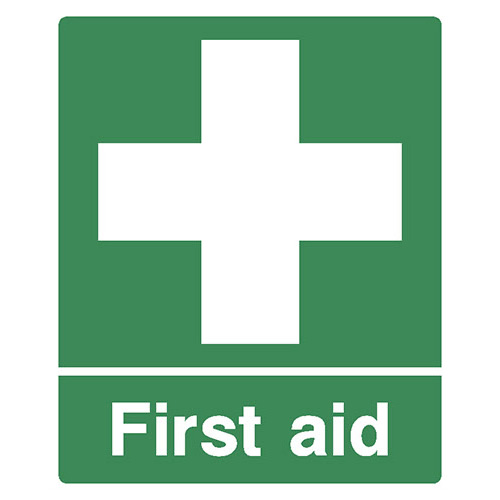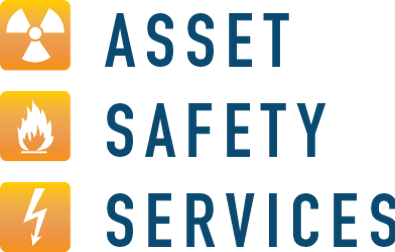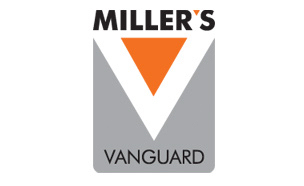Title Page
-
Chillfactore
-
Conducted on
-
Prepared by
ABOUT THE INJURED PERSON
Personal Information
-
Is the guest okay with giving all their personal information?
-
Please state why.
-
Full Name
-
Telephone Number
-
Address
-
Postcode
-
Sex
-
Date of Birth
-
Age
-
Status
Representative
-
Is the person under 16?
-
Name of responsible adult
-
Relationship to Injured Person
- Mother
- Father
- Grandparent
- Teacher
- Carer
- Extended family member
- Friend
- Other
-
Contact number
ABOUT THE INCIDENT
Booking Information
-
Booking Reference Number
-
Time/Date session started
-
Time of accident
-
Location of incident
- Main slope
- Beginners slope
- Snow Park
- Changing village
- Alpine street
- External
- Other
-
Activity Type
- Lift pass - ski
- Lift pass - snowboard
- Lesson - ski
- Lesson - snowboard
- Snowpark - donuts
- Snowpark - sledging
- Snowpark - luge
- Freestyle - ski
- Freestyle - SB
- Other
-
Please provide Instructor/Activity Supervisor name if possible
Incident Information
-
Details of Incident as described by the Injured Person/or Other (please specify)
-
Name of witness
-
Did the Injured Person continue their session after their injury?
-
Were any other guest(s) required to leave their session?
-
Name of guest(s) affected
-
Did the guest refuse to give information?
-
Please explain why
-
Did the guest refuse First Aid?
-
Please explain why
ABOUT THE INJURY
-
What was the primary cause of the injury
- Contact with moving machinery
- Hit by moving, flying, falling object
- Hit something fixed or stationary
- Injured while handling, lifting or carrying
- Slipped, tripped or fell on the same level
- Fell from a height
- Trapped by something collapsing or overturning
- Physically assaulted by a person
- Other kinds of accident
-
After your assessment, what category does the potential injury fall into?
- Fractures, other than to fingers, thumbs and toes
- Amputations
- Any injury likely to lead to permanent loss of sight or reduction in sight
- Any crush injury to the head or torso causing damage to the brain or internal organs
- Serious burns (including scalding) which: covers more than 10% of the body
- Serious burns (including scalding) which: causes significant damage to the eyes, respiratory system or other vital organs
- Any scalping requiring hospital treatment
- Any loss of consciousness caused by head injury or asphyxia
- Any other injury arising from working in an enclosed space which: leads to hypothermia or heat-induced illness
- Any other injury arising from working in an enclosed space which: requires resuscitation or admittance to hospital for more than 24 hours
- None of the above
-
After your assessment, what was the cause of the potential injury? (tick as many boxes as applies)
- Amputation
- Loss of sight
- Fracture
- Dislocation without fracture
- Concussion and/or internal injury
- Laceration and open wound
- Contutsions and bruising
- Burn
- Aphyxia or poisoning
- Strain/Sprain
- Superficial injury
- Multiple injury
- Electric shock
- Natural cause
- Other known injury
- Other unknown injury
-
Please add any more information about the injury that you feel is required
-
Area(s) of the body where injury is present (tick all that apply)
- Right Eye
- Left Eye
- Right Ear
- Left Ear
- Nose
- Left side of face
- Right side of face
- Left side of head
- Right side of head
- Left collar bone
- Right collar bone
- Back of head
- Neck
- Back
- Stomach
- Lefthand finger(s)/thumb
- Righthand finger(s)/thumb
- Left hand
- Right hand
- Left wrist
- Right wrist
- Left shoulder
- Right shoulder
- Left upper arm
- Right upper arm
- Left elbow
- Right elbow
- Left forearm
- Right forearm
- Left foot toe
- Right foot toe
- Left foot
- Right foot
- Left ankle
- Right ankle
- Left lower leg
- Right lower leg
- Left knee
- Right knee
- Left thigh
- Right thigh
- Unknown location
-
Please add any more information that is required
-
Description of First Aid provided to Injured Person
EQUIPMENT
-
Was any of the Injured Person's equipment available?
-
Was the Injured Person skiing or snowboarding?
Ski
-
Left Ski Length
- 77
- 87
- 97
- 107
- 117
- 127
- 137
- 140
- 149
- 150
- 156
- 160
- 163
- 170
- 180
-
Right Ski Length
- 77
- 87
- 97
- 107
- 117
- 127
- 137
- 140
- 149
- 150
- 156
- 160
- 163
- 170
- 180
-
Left Boot Sole Length
-
Right Boot Sole Length
-
Please photograph Ski-Fit Machine receipt if available.
Snowboard
-
Snowboard Length
- 80
- 90
- 100
- 110
- 115
- 120
- 130
- 140
- 146
- 149
- 154
- 159
- 163
- 168
-
Binding Size
- Blue Burton
- Green Burton
- Yellow Head
- Blue Head
- Red Head
- Orange Head
-
Boot Size
- 16.5
- 17.5
- 18.5
- 19.5
- 20.5
- 21.5
- 22.5
- 23.5
- 24.5
- 25.5
- 26.5
- 27.5
- 28.5
- 29.5
- 30.5
- 31.5
- 32.5
- 33.5
- 34.5
DECLARATION by Injured Person or Representative
-
First Aid given by
-
As the First Aider I offered to call the guest an ambulance.
-
Ambulance Refusal Signature
-
I declare that the information recorded on this form is correct, I have read the declaration and have received an Information Sheet from the First Aider
-
Select date
DECLARATION by First Aider
-
Did the injured person become unconscious?
-
Did the injured person require resuscitation?
-
Is this incident a specified injury and reportable to the HSE under RIDDOR? (see guidance notes on the final page to confirm the injury) <br>NOTE: <br>Accidents to members of the public or others who are not at work must be reported if they result in an injury and the person is taken directly from the scene of the accident to hospital for treatment to that injury. Examinations and diagnostic tests do not constitute 'treatment' in such circumstances. There is no need to report incidents where people are taken to hospital purely as a precaution when no injury is apparent.
-
I confirm that the information contained in this Incident Report Form is correct to the best of my knowledge and I have explained that whilst I have completed a First Aid Course, I am not a medical professional. I have advised that they should seek further medical attention after leaving the centre.
-
Select date
DECLARATION by Operations Shift Manager
-
Has the equipment been quarantined?
-
Please provide any further relevant information regarding the incident.
-
Operations Shift Manager
-
Select date
Guidance on RIDDOR reporting
Specified injuries to workers
-
Fractures, other than to fingers, thumbs and toes
-
Bone fractures include a break, crack or chip. They are reportable when diagnosed or confirmed by a doctor, including when they are specified on a GP 'fit note'. In some cases, there may be no definitive evidence of a fracture (eg if an X-ray is not taken), but the injury will still be reportable if a doctor considers it is likely that there is a fracture. Self-diagnosed 'suspected fractures' are not reportable.
-
Amputation of an arm, hand, finger, thumb, leg, foot or toe
-
Amputation includes both a traumatic amputation injury at the time of an accident, and surgical amputation following an accident, as a consequence of the injuries sustained.
-
Any injury likely to lead to permanent loss of sight or reduction in sight in one or both eyes
-
Any blinding and injuries causing reduction in sight are reportable when a doctor diagnoses that the effects are likely to be permanent.
-
Any crush injury to the head or torso, causing damage to the brain or internal organs
-
Injuries to the brain or internal organs in the chest or abdomen are reportable, when caused by crushing as result of an accident.
-
Any burn injury (including scalding) which: covers more than 10% of the whole body's total surface area or causes significant damage to the eyes, respiratory system or other vital organs. Burns which meet the above criteria are reportable, irrespective of the nature of the agent involved, and so include burns caused by direct heat, chemical burns and radiological burns. Medical staff may indicate the approximate proportion of skin suffering burn damage, and charts are often available in hospital burns units. In adults of working age, the Rule of Nines can help estimate the body surface area (BSA) affected: skin covering the head and neck: 9%, skin covering each upper limb: 9%, skin covering the front of the torso: 18%, skin covering the rear of the torso: 18%, skin covering each lower limb: 18%, If the BSA of a burn exceeds 15% in an adult, they are likely to require hospitalisation for intravenous fluid resuscitation.
-
Where the eyes, respiratory system or other vital organs are significantly harmed as a consequence of a burn, this is a reportable injury irrespective of the surface area covered by that burn. Damage caused by smoke inhalation is not included in this definition.
-
Any degree of scalping requiring hospital treatment
-
Scalping is the traumatic separation or peeling of the skin from the head due to an accident, eg hair becoming entangled in machinery. Lacerations, where the skin is not separated from the head, are not included, nor are surgical procedures where skin removal is deliberate.
-
Any loss of consciousness caused by head injury or asphyxia
-
Loss of consciousness means that the injured person enters a state where there is a lack of response, either vocal or physical, to people trying to communicate with them. The length of time a person remains unconscious is not significant in terms of whether an accident is reportable.
-
Asphyxia (lack of oxygen) may happen when a person enters an oxygen-deficient atmosphere, such as a confined space, or are exposed to poisonous gases, eg carbon monoxide.
-
Any other injury arising from working in an enclosed space which: leads to hypothermia or heat-induced illness or requires resuscitation or admittance to hospital for more than 24 hours. An enclosed space includes any space wholly or partly enclosed, to the extent that there is a significantly increased risk to the health and safety of a person in that space by virtue of its enclosed nature. This includes any confined space as defined by the Confined Spaces Regulations 1997, and additionally similar spaces where there is a foreseeable risk of hypothermia (eg a cold store). NB: Hypothermia is not a specified risk in the Confined Spaces Regulations.
-
Hypothermia and heat-induced illness includes situations where a person has an adverse reaction (the physical injury) to intense heat or cold acting on the body, so they need help from someone else.
What to do when the extent of an injury is unclear
-
In some cases, employers and self-employed workers may not be in a position to know the full extent of an injury, eg when a prognosis has not yet been established in relation to an eye injury, or when efforts are being made to treat an injured limb which may ultimately require surgical amputation. In such situations, there is no requirement to make precautionary reports of specified injuries. It is likely that the accident will in any case require reporting due to the injured person being incapacitated for more than seven days. The enforcing authority should be notified or updated as soon as a specified injury has been confirmed.













